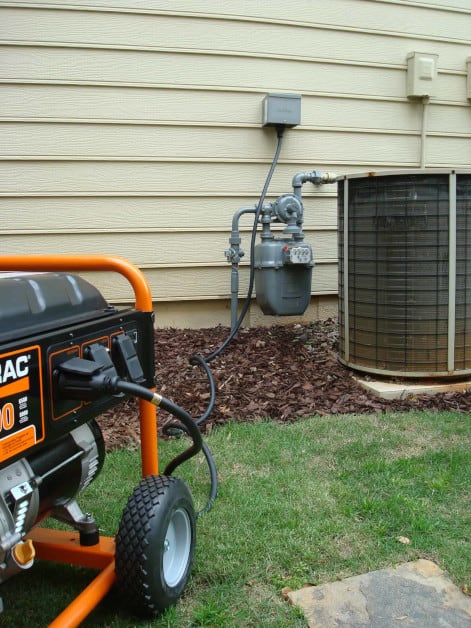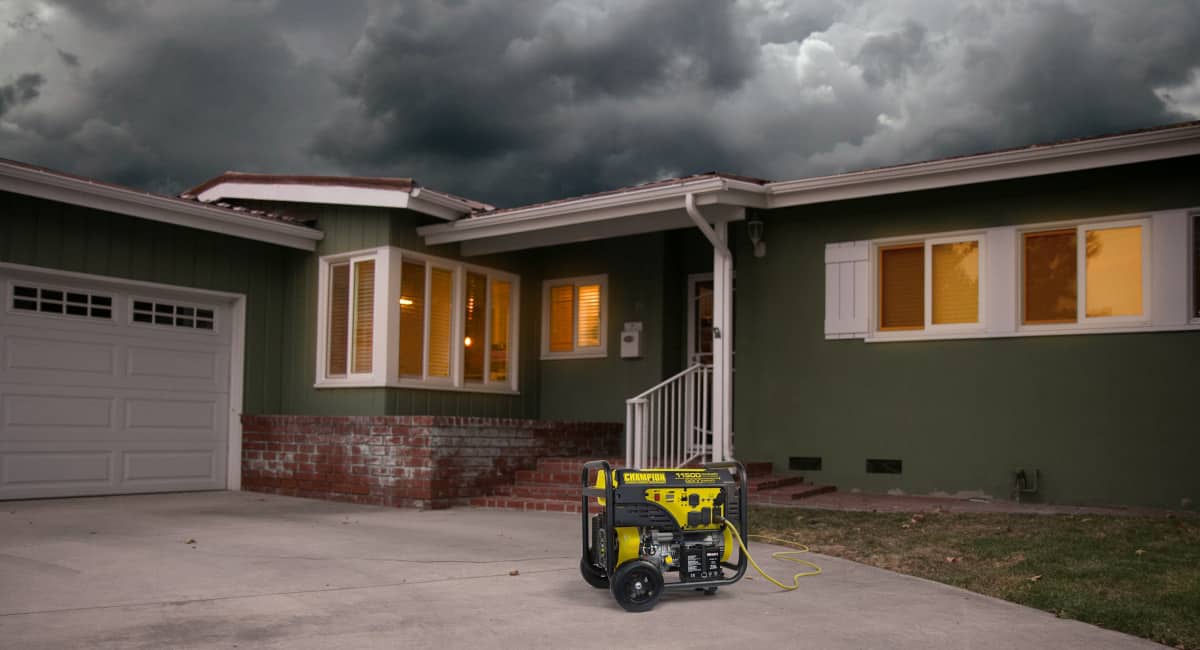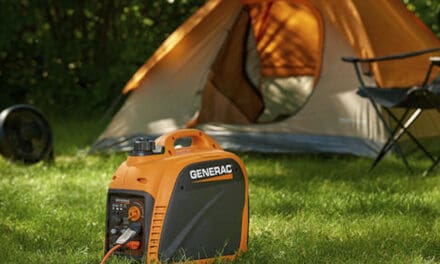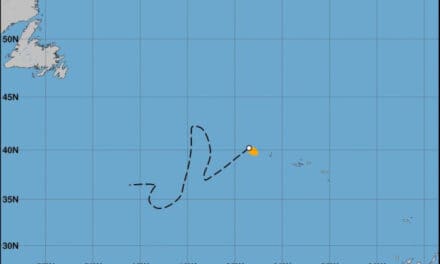How you connect your generator to your house determines what you can run and the safety of the connections
The Best Way to Connect a Portable Generator to Your Home
When a power outage occurs, the safest, fastest, easiest way to provide backup emergency power to a home is with standby generator system. An automatic transfer switch controls the home’s source of power by switching it between the utility supply and the standby generator supply as required. Startup and load transfer is automatic. The generator runs on municipal natural gas or LP gas from a residential storage tank.
In cases where a standby generator is not practical or can’t be installed for some reason, a portable generator can supply power during an outage.

Portable Connection Options
Most people probably grab a few handy extension cords and run them between the generator and the appliances inside the house. It’s not the most convenient, especially with multiple appliances in different parts of the house, but it gets the job done.
- Extension Cords
- Generator Cord to Transfer Switch
120-Volt Extension Cords: Connecting appliances to a portable generator with extension cords is the most basic option. Plug the cord into the generator receptacle. Plug an appliance into the extension cord. This method works fine for appliances such as refrigerators and freezers, or a sump pump that is keeping the basement dry during a storm. However, hardwired appliances can’t receive power through an extension cord. These appliances connect directly to a circuit breaker panel and don’t have a cord. Furnaces, central air conditioners, electric water heaters, and some well pumps fall into this category.
120/240-Volt Extension Cords: These extension cords may have multiple outlets on one end and a single, 120/240-Volt outlet on the other. It’s also possible to power a 120/240-volt Appliance like an electric dryer or range, and some well pumps
Tip: A 30-Amp Cord will have a different plug than a 50-Amp Cord. Buy an extension cord that matches your generator outlet.
Never connect a generator to a home through an appliance outlet. Backfeeding is Dangerous and Illegal. Never Backfeed Your House With a Generator.
A manual transfer switch is the best way to connect your essential circuits to the generator. Circuit breakers in a dedicated panel controlled by the switch distribute electricity to the circuits chosen at installation. During an outage, a generator cord connects the generator to an inlet box connected to the transfer switch.
Important: Start your generator, then apply loads one at a time. With extension cords, plug in the heaviest load first, wait a few seconds, then add the other loads one at a time. With a transfer switch, turn on the breaker for the heaviest load first, then add the others one at a time.
Don’t shutdown the generator until all the loads are removed. Avoid allowing the generator to run out of fuel with a load connected.
Safe Emergency Power—Transfer Switch
The reason for a transfer switch is simple. A manual or automatic transfer switch isolates the home from the utility lines when the generator supplies power to the house. Without a transfer switch, it is quite possible to accidentally feed the utility lines with a generator. The transformer that supplies the house will convert that generator power from 240 volts to as much as 69,000 volts.
More than enough voltage to kill or seriously injure a neighbor or utility worker.
If you accidentally backfeed a utility line with your generator and your actions cause injury or death to a utility worker, you will be held responsible for those actions. Never backfeed your home and you won’t accidentally backfeed the utility lines.
No safety mechanism exists while backfeeding a house to prevent illegally and dangerously backfeeding the utility as well. Turning off a main breaker is not enough.

This generator cord to manual transfer switch inlet box allows the generator to power the furnace, a small central air conditioner, well pump, or other hardwired appliance.

Manual Transfer Switches
A manual transfer switch is exactly what its name states. It is a manual device that requires a human to throw the switch from utility to generator. When that happens, the circuits supplied by the generator are isolated from the utility lines and connected to generator power. Returning the switch to the utility reverses the action and reconnects utility power.
When a power outage occurs, the homeowner moves the portable outside for placement in a safe location that won’t gather standing water or allow deadly exhaust to enter the home. The dedicated power cable plugs into the generator panel and into the inlet box. With the manual transfer switch in the generator position and the generator main breaker turned OFF, the homeowner starts the generator. After it warms up, the generator’s main breaker is turned to on. Individual circuits in the transfer switch are ready to receive power.
When the utility restores power, the process is reversed. The manual transfer switch is returned to utility mode to restore power to the home. The generator main breaker is turned off, which removes power from the cable and receptacle panel. Finally, the generator is turned off, allowed to cool, and put away.
Tip: After disconnecting power from the generator, turn the fuel valve to off and let it burn the remaining gasoline. This helps keep the carburetor clean.
Extension Cord Size
Only use outdoor extension cords with the correct gauge wire. Size extension cords based on the current that the generator receptacle is capable of supplying. If a receptacle has a 20-amp circuit breaker, then it could supply 20 amps of current, and a 12-gauge extension cord is the minimum size.
A common mistake is to size the cord by the appliance requirement. For instance, using a 16-gauge extension cord to run a 10-amp appliance off a 20-ampere generator receptacle. If someone plugs another appliance into the cord, the cord could overheat and cause a fire.
Keep extension cords on hand that will supply the maximum amount of current that might be drawn through the cord. Don’t rely on guesses or that no one will make a mistake.
Only use cords with a minimum rating equal to the generator outlet rating.
Generator Cables
Dedicated cables connect a 240/120-volt generator outlet to the inlet box. Distributor or manufacturer supplied cables have the correct connectors for the amount of current they can handle. A 30-amp cord has connectors rated at 30 amps and will only connect to 30-amp receptacles. The same is true of 50-amp cables.
The cables have four wires configured in similar way to an electric dryer or electric range cable. Two wires each carry 120 volts for a total of 240 volts. Another wire serves as a neutral or return for the 120-volt wires. The fourth wire is ground and connects to the generator’s metal chassis and to the ground bus in the manual transfer switch.
Check your generator owner manual for the correct way to ground your generator when using it with a manual transfer switch.
Updated February 28, 2024
















